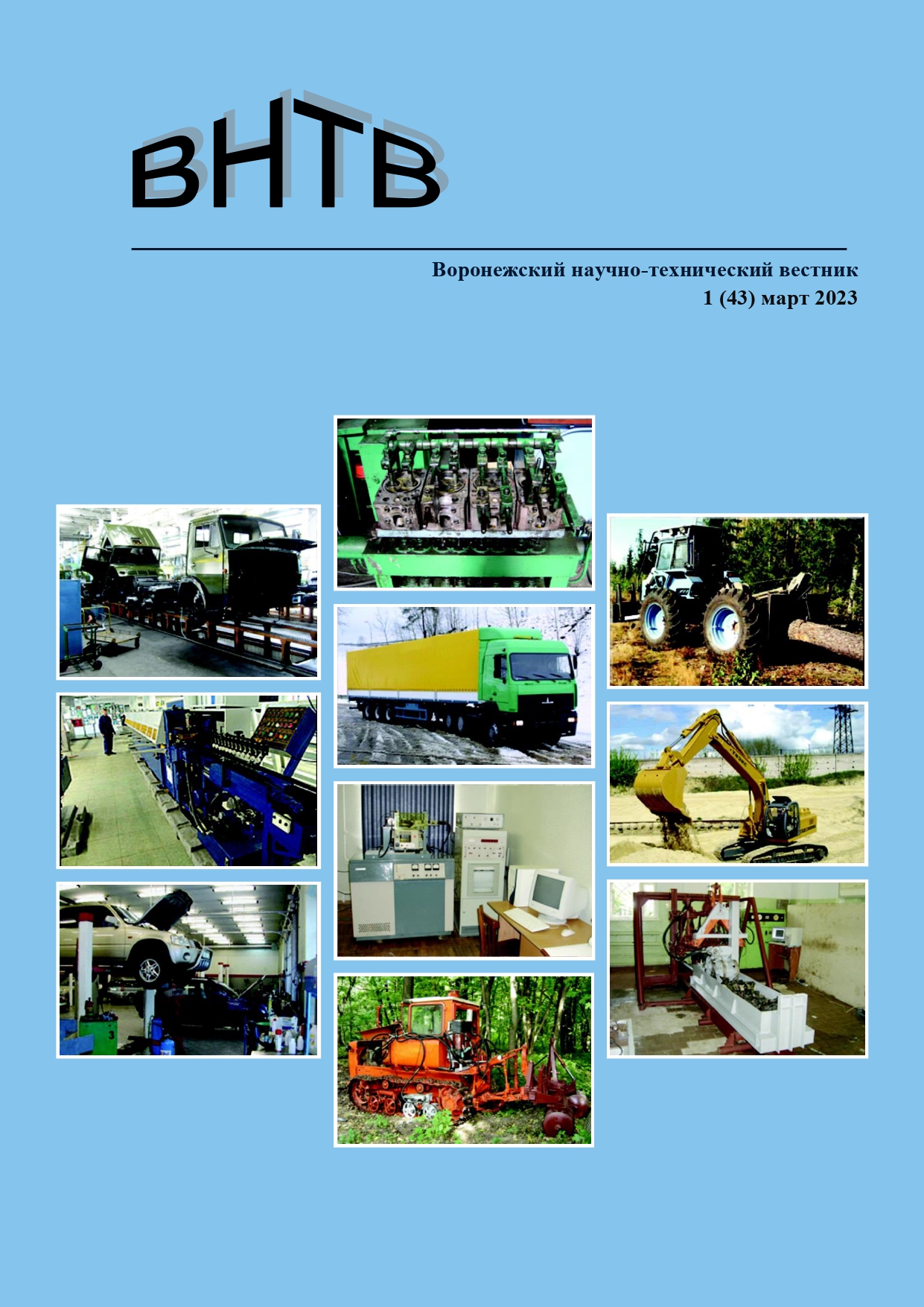UDC 62-72
Resource and energy saving is an important global problem. Vegetable oil based lubricants are becoming increasingly important in the industrial lubricants market due to their biodegradability, renewability, minimal environmental impact, excellent tribological performance and stringent environmental regulations. This review article discusses various aspects of biolubricants, such as the chemical composition of various vegetable oils, chemical modification methods used to synthesize biolubricants, the physicochemical and rheological properties of biolubricants, the tribological characteristics of biolubricants under various conditions, and various nanoparticles used to improve performance. biolubricants. In addition, the prospects for the use of bio-lubricants in road transport are considered.
TRIBOLOGY, BIOLUBRICATION, NANOPARTICLES, ADDITIVES, SYNTHESIS, AUTOMOBILE TRANSPORT
1 Состояние вопроса исследования и актуальность работы
Значительный прогресс в промышленном производстве, распространении автомобильного транспорта и неуклонный рост человеческих потребностей привели к увеличению использования различных механических устройств и агрегатов, для обеспечения бесперебойной работы и максимальной эффективности которых необходимо применение смазочных материалов [1]. Спрос на смазочные материалы резко возрос в связи с промышленной революцией и ростом продаж автомобилей. Согласно исследованию мирового рынка, в 2019 году было использовано 36,8 млн. тонн смазочных материалов, с прогнозируемым увеличением спроса примерно на 2,1% каждый год. В 2020 году объем мирового рынка смазочных материалов оценивался в 125,81 млрд. долларов США. Кроме того, ожидается, что в период с 2021 по 2028 год рынок будет расти в среднем на 3,7%. Продажи и производство смазочных материалов играет жизненно важную роль в экономике страны, поскольку быстрое истощение запасов ископаемого топлива вызывает внезапные колебания цен на смазочные материалы [2].
Трибологические исследования показывают, что одна треть механической энергии теряется в виде тепла в процессе трения между поверхностями. В автомобильном машиностроении 30 % потерь энергии приходится на элементы включающие подшипниковые или трущиеся поверхности (поршневой узел, систему трансмиссии, подшипники, распределительный и коленчатый вал, клапанный механизм и т. д). Контроль трибологических характеристик с помощью смазочных материалов может приводить к экономии энергии на 40–50 %. [3].
Основной функцией смазочного материала является создание защитного слоя между трущимися поверхностями и предотвращение их трения и износа. Кроме того, смазка может быть использована для отвода тепла от поверхностей, защиты от окисления и коррозии, транспортировки загрязнений к фильтрам, обеспечения демпфирующего и амортизирующего эффекта и герметизации. К современным смазочным материалам предъявляются высокие требования такие как: высокий индекс вязкости, широкий диапазон рабочих температур, высокая термическая стабильность, низкий износ и коэффициент трения, а также высокая стойкость к коррозионному окислению. Основные классы смазочных масел представлены на рисунке 1 [4].
Спрос на смазочные масла неуклонно растет, а традиционные смазочные материалы на основе минеральных масел несут в себе ряд экологических проблем: не поддаются биологическому разложению, напрямую загрязняют почвы и грунтовые воды, сокращают рост деревьев и продолжительность жизни водных организмов, являются истощаемым ресурсом, загрязняют воздух летучими и токсичными компонентами.

Рисунок 1 – Основные классы смазочных материалов
Степень биоразлагаемости смазочных материалов на нефтяной основе составляет от 10 до 30 %. Современная индустрия смазочных материалов становится все более экологически ответственной, уделяя особое внимание устойчивости и сохранению окружающей среды за счет экологически чистых смазочных материалов на биологической и растительной основе. Мировые экологические инициативы значительно возросли в связи с повышением цен на нефтяное масло, истощения углеводородных запасов и строгих правительственных постановлений об использовании минерального масла. Растущая озабоченность по поводу воздействия минеральных смазочных материалов на окружающую среду и истощения запасов ископаемого топлива побуждает исследователей искать смазочные материалы на биологической основе [5].
Существуют исследования, в которых природные материалы, такие как растительное масла и животные жиры, рассматриваются в качестве потенциального источника для производства смазочных материалов из-за наличия в их составе более высокого содержания жирных кислот с целью применения их в автомобильном транспорте. Применение данных смазочных материалов в автомобилях зависят от длины углеродной цепи, степени ненасыщенности, типа функциональной группы, разветвленной природы соединения.
Передовые исследования в области новых смазочных материалов, использования присадок и наночастиц могут значительно снизить влияние трения и износа в машинах. В связи с этим целью данной статьи является всесторонний обзор литературы в области использования смазочных материалов на биологической основе и различных компонентов данных масел с учетом их трибологических, физико-химических, реологических свойств и дисперсионных свойств.
1. Yelchuri V., Azmeera T., Karuna M. S. L. Metathesized castor oil acylated derivatives: lubricants base stocks with low pour points and superior anti-wear properties //SN Applied Sciences. - 2019. - T. 1. - №. 10. - C. 1214.
2. Zulkifli N. W. M. et al. Lubricity of bio-based lubricant derived from different chemically modified fatty acid methyl ester //Tribology International. - 2016. - T. 93. - C. 555-562.
3. Sharma U. C., Sachan S. Friction and wear behavior of karanja oil derived biolubricant base oil //SN Applied Sciences. - 2019. - T. 1. - C. 1-11.
4. Borda F. L. G. et al. Experimental investigation of the tribological behavior of lubricants with additive containing copper nanoparticles //Tribology International. - 2018. - T. 117. - C. 52-58.
5. Bellini M. et al. Vegetable oils as Triple Bottom Line compliant lubricants //Tribology International. - 2021. - T. 161. - C. 107103.
6. Schneider M. P. Plant-oil-based lubricants and hydraulic fluids //Journal of the Science of Food and Agriculture. - 2006. - T. 86. - №. 12. - C. 1769-1780.
7. Hajar M., Vahabzadeh F. Biolubricant production from castor oil in a magnetically stabilized fluidized bed reactor using lipase immobilized on Fe3O4 nanoparticles //Industrial Crops and Products. - 2016. - T. 94. - C. 544-556.
8. Joseph P. V., Sharma D. K. Improvement of thermooxidative stability of non-edible vegetable oils of Indian origin for biodegradable lubricant application //Lubrication Science. - 2010. - T. 22. - №. 4. - C. 149-161.
9. Kržan B., Vižintin J. Tribological properties of an environmentally adopted universal tractor transmission oil based on vegetable oil //Tribology International. - 2003. - T. 36. - №. 11. - C. 827-833.
10. Reeves C. J. et al. The influence of fatty acids on tribological and thermal properties of natural oils as sustainable biolubricants //Tribology International. - 2015. - T. 90. - C. 123-134.
11. Salimon J., Salih N., Abdullah B. M. Diesters biolubricant base oil: synthesis, optimization, characterization, and physicochemical characteristics //International Journal of Chemical Engineering. - 2012. - T. 2012.
12. Aravind A., Prabhakaran Nair K., Joy M. L. Formulation of a novel biolubricant with enhanced properties using esterified rubber seed oil as a base stock //Proceedings of the Institution of Mechanical Engineers, Part J: Journal of Engineering Tribology. - 2018, - T. 232. - №. 12. - C. 1514-1524.
13. Syahrullail S., Kamitani S., Shakirin A. Performance of vegetable oil as lubricant in extreme pressure condition //Procedia Engineering. - 2013. - T. 68. - C. 172-177.
14. Ruggiero A. et al. Tribological characterization of vegetal lubricants: Comparative experimental investigation on Jatropha curcas L. oil, Rapeseed Methyl Ester oil, Hydrotreated Rapeseed oil //Tribology International. - 2017. - T. 109. - C. 529-540.
15. Salih N., Salimon J. A review on eco-friendly green biolubricants from renewable and sustainable plant oil sources //Biointerface Res. Appl. Chem. - 2021. - T. 11. - №. 5. - C. 13303-13327.
16. Kotturu C. M. V. V. et al. Investigation of tribological properties and engine performance of polyol ester-based bio-lubricant: Commercial motorbike engine oil blends //Proceedings of the Institution of Mechanical Engineers, Part D: Journal of Automobile Engineering. - 2020. - T. 234. - №. 5. - C. 1304-1317.
17. Georgescu C., Solea L. C., Deleanu L. The influence of degumming process on tribological behaviour of soybean oil //Tribology in Industry. - 2015. - T. 37. - №. 3. - C. 330.
18. Georgescu C., Solea L. C., Deleanu L. The influence of degumming process on tribological behaviour of soybean oil //Tribology in Industry. - 2015. - T. 37. - №. 3. - C. 330.
19. Shahabuddin M. et al. Study on the friction and wear characteristics of bio-lubricant synthesized from second generation jatropha methyl ester //Tribology in Industry. - 2020.
20. Sneha E. et al. Formulation of bio-lubricant based on modified rice bran oil with stearic acid as an anti-wear additive //Proceedings of the Institution of Mechanical Engineers, Part J: Journal of Engineering Tribology. - 2021. - T. 235. - №. 9. - C. 1950-1957.
21. Cheah M. Y. et al. Physicochemical and tribological properties of microalgae oil as biolubricant for hydrogen-powered engine //International Journal of Hydrogen Energy. - 2020. - T. 45. - №. 42. - C. 22364-22381.
22. Khemchandani B. et al. Mixture of safflower oil and synthetic ester as a base stock for biodegradable lubricants //Lubrication Science. - 2014. - T. 26. - №. 2. - C. 67-80.
23. Chan C. H. et al. Tribological behavior of biolubricant base stocks and additives //Renewable and Sustainable Energy Reviews. - 2018. - T. 93. - C. 145-157.
24. Deepika S. Nanotechnology implications for high performance lubricants //SN Appl. Sci. - 2020. - T. 2. - C. 1128.
25. Talukdar S., Ghosh P. Biodegradable vegetable oil polymer as a multifunctional lubricating oil additive //Journal of Macromolecular Science, Part A. - 2020. - T. 57. - №. 4. - C. 244-249.
26. Ghosh P. et al. Multifunctional biodegradable lube oil additives: Synthesis, characterization, and performance evaluation //Petroleum Science and Technology. - 2017. - T. 35. - №. 1. - C. 66-71.
27. Ghosh P., Das M. Biocompatible multifunctional lubricating oil additives //Petroleum Science and Technology. - 2016. - T. 34. - №. 15. - C. 1367-1373.
28. Xiao H. et al. Amine-intercalated α-zirconium phosphates as lubricant additives //Applied Surface Science. - 2015. - T. 329. - C. 384-389.
29. Alves S. M. et al. Tribological behavior of vegetable oil-based lubricants with nanoparticles of oxides in boundary lubrication conditions //Tribology international. - 2013. - T. 65. - C. 28-36.
30. Bekal S., Bhat N. R. Bio-lubricant as an alternative to mineral oil for a CI engine-an experimental investigation with pongamia oil as a lubricant //Energy Sources, Part A: Recovery, Utilization, and Environmental Effects. - 2012. - T. 34. - №. 11. - C. 1016-1026.
31. Azman N. F. et al. The anti-wear and extreme pressure performance of CuO and graphite nanoparticles as an additive in palm oil //International Journal of Structural Integrity. - 2019. - T. 10. - №. 5. - C. 714-725.
32. Singh Y. et al. Sustainability of a non-edible vegetable oil based bio-lubricant for automotive applications: A review //Process Safety and Environmental Protection. - 2017. - T. 111. - C. 701-713.
33. Dai W. et al. Roles of nanoparticles in oil lubrication //Tribology International. - 2016. - T. 102. - C. 88-98.
34. Sui T. et al. Effect of particle size and ligand on the tribological properties of amino functionalized hairy silica nanoparticles as an additive to polyalphaolefin //Journal of Nanomaterials. - 2015. - T. 16. - №. 1. - C. 427-427.
35. Azman S. S. N. et al. Study of tribological properties of lubricating oil blend added with graphene nanoplatelets //Journal of Materials Research. - 2016. - T. 31. - №. 13. - C. 1932-1938.
36. Luo T. et al. Tribology properties of Al2O3/TiO2 nanocomposites as lubricant additives //Ceramics International. - 2014. - T. 40. - №. 7. - C. 10103-10109.
37. Roslan S. H., Abd Hamid S. B., Mohd Zulkifli N. W. Synthesis, characterisation and tribological evaluation of surface-capped molybdenum sulphide nanoparticles as efficient antiwear bio-based lubricant additives //Industrial Lubrication and Tribology. - 2017. - T. 69. - №. 3. - C. 378-386.










